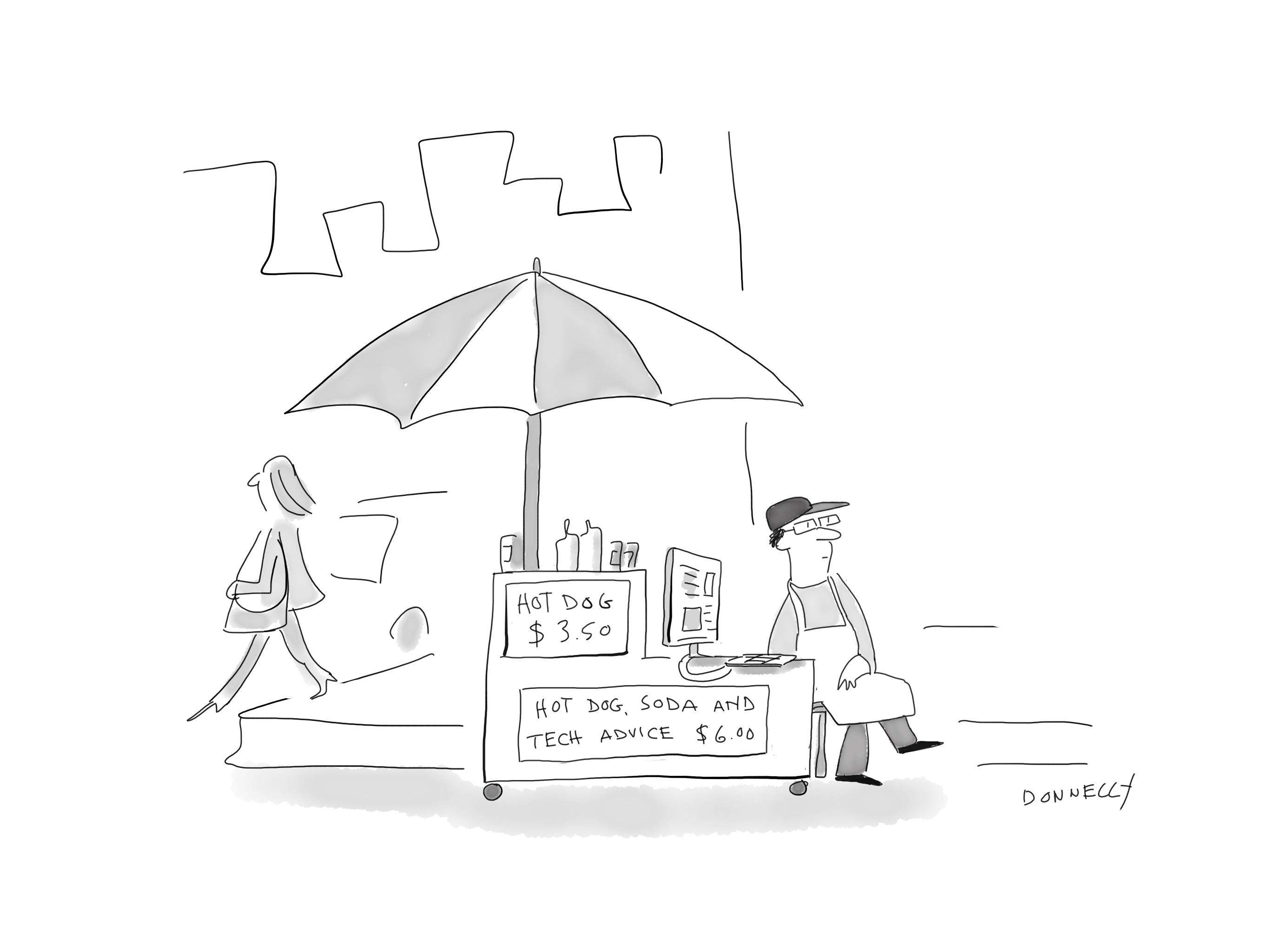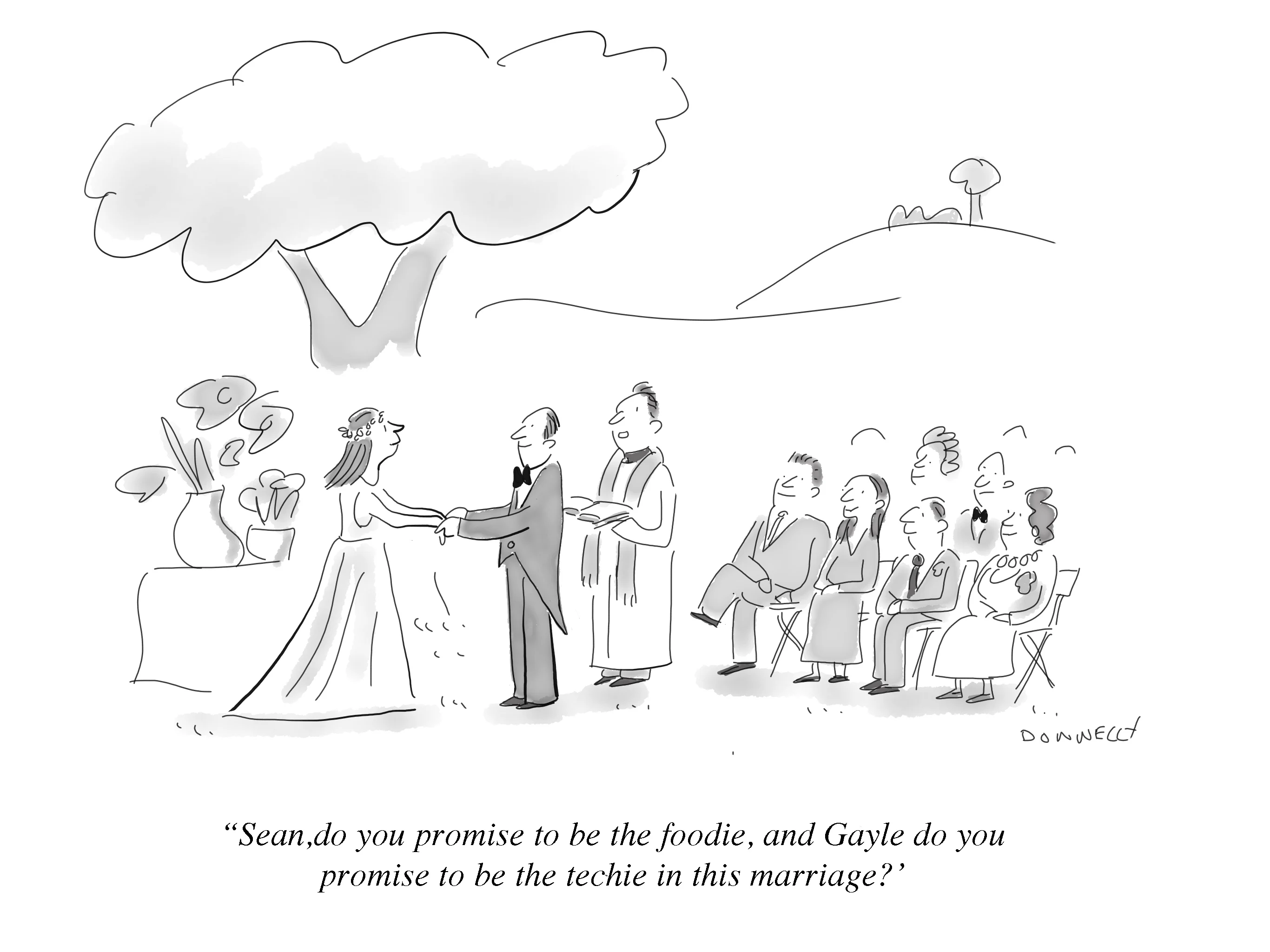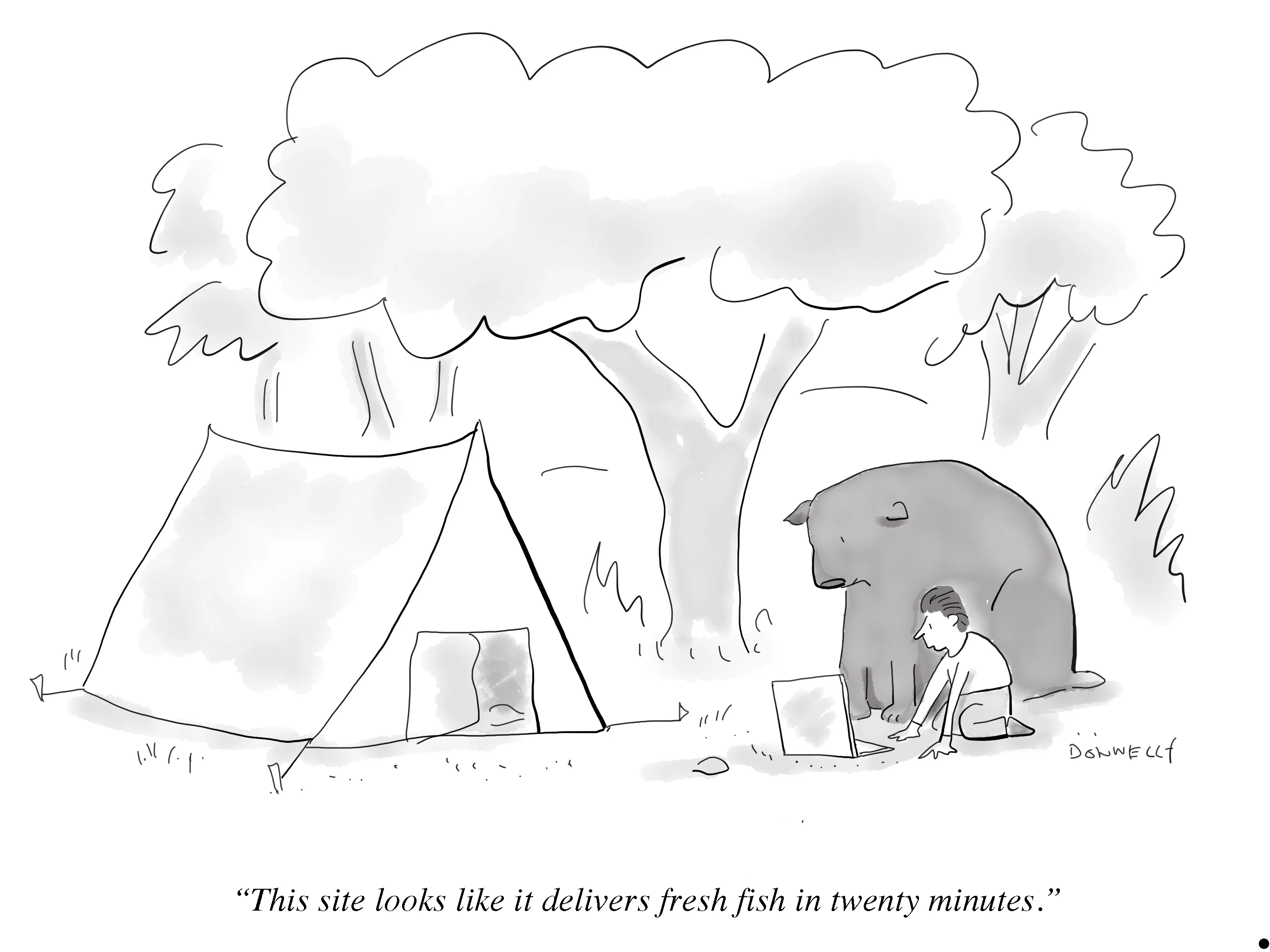

Liza Donnelly has been a cartoonist for The New Yorker since 1982, creating one-image wonders that cut to the core of modern culture. She’s also a Cultural Envoy for the US State Department, the author of more than 20 books and a sought-after public speaker.
But her first love is cartooning, which she calls a “timeless and resilient” artform. “Cartoons are an equal opportunity medium,” she says. “I see cartoons as a conversation – to point out what is going wrong and engage people in trying to help.”
“I think cartoonists are cynics but also optimists because otherwise why would we do it?” she continues. “We can be truthful and see things as they are, but we can also be hopeful. People ask me frequently, can cartoons change the world? Maybe. You have to have some hope.”
Over lunch in New York, Rob Alderson spoke to Liza about technology and how it’s changed the way she works over the past four decades.

On how the industry has changed…
Cartoons for print are a little more timeless.
It was all so gradual. I’ve been at The New Yorker for 40 years and it’s not enough to pay the rent, but it’s a great name to have attached to your work. Around the time other publications started dying and stopped using cartoons, I began publishing books and did a TED talk and teaching a bit. Everything started shifting.
I had to learn these new skills. I set up my own speaking tour after the book about women cartoonists in the New Yorker which was a complete passion project. Giving talks about other people was so much easier. I got my feet wet doing that, and that helped me get used to speaking. Someone helped me with being on stage – a former dancer who helped me use my body in a more relaxed way.
On social media as a new publishing platform...
Twitter opened up so many opportunities for me. Meeting people on Twitter, seeing there were a lot of feminist groups working for the same cause, that was fun. I was teaching women’s studies and Hillary was running for the first time and I was doing more cartoons about feminism in a stronger way, testing the waters with my political ideas.
Print has a long lead time, so the cartoons for print are a little more timeless. I was testing myself to see how I could do political cartoons that worked on the internet. I used social media as a dialogue tool and not necessarily worrying about getting paid.

On going viral with her “good girl or slut” cartoon...
It took off like crazy. I haven’t made any money on that cartoon but it struck a nerve. That’s exciting. It’s quite a change from the old days when you relied on your editor at The New Yorker saying, this is a funny idea. You can just put it out there and that’s it. People will decide if it’s a funny idea.
On shifting to working on tablet...
When I draw on a tablet or phone, it’s immediate oftentimes.
It happened sort of by accident. I was playing around with a Wacom and then someone gave me an iPad and I was drawing what I saw on the TV. I was messing about on Paper drawing the State of the Union because it was boring, and then I tweeted out the drawings. I could see it struck a nerve. The drawings were colorful and simple and bold and made some sort of snarky comment. That’s how that happened.
So then when there was a national or international event happening, I would draw it because I knew my Twitter stream would enjoy it. I did the Olympics, the Oscars, the Grammys, The Emmys. I got more comfortable using the iPad that way. Because my style is so simple, it was an easy transition to draw on the tablet.
It was like going back to where I first learned how to draw because maybe I had gotten too comfortable on paper. Drawing on the tablet was almost like starting all over again with skills that you already have.
I do miss having an original piece of artwork but it’s just a price I pay.

On the joys of speed...
There are formulas, but the best cartoons aren’t formulized.
When I draw on a tablet or phone, it’s immediate oftentimes. I might not have a piece of paper and a pencil but I have my phone with me always. A couple of times things have happened in the news and I wanted to stop right there and draw and send it out on Twitter.
Like when Harvey Weinstein was sentenced, I drew a sequential drawing on my phone and put it on Medium. It was pretty crude looking – which is what happens on my phone – but Ms. Magazine published it in print later on because they really liked not just the sentiment but the crudeness of it, the immediacy of my reaction.
On sharing her process on YouTube...
I got the idea of using a phone to record my hand drawing, and people seem to enjoy that. It was so untechnical the way I did it. If I had just begun as a cartoonist three years ago and tried to do what I am doing now, I don’t know if it would have been that interesting to people. I think because I have had the history of being in print and being a New Yorker cartoonist, that makes it interesting to people.

On what hasn’t changed...
I still use the newspaper to spark ideas, leafing through the paper itself because you see things you wouldn’t see online. Jotting things down that may or may not go anywhere – words or phrases or trends or just random ideas. Then you have to let your mind relax and pull stuff out of there and put it on paper; try to combine things.
There are ways to do a cartoon; there are formulas. But the best cartoons aren’t formulized. You’ve got to let your mind wander and listen to yourself think. I don’t think that has changed over the years.
On how the online world has dissolved old barriers...
The cartoons in The New Yorker are often cultural commentary rather than political cartoons. That’s the tradition I come from. I have been struggling over the years to make it known that cultural cartoons are also political cartoons, particularly when it comes to women.
I feel that was a niche I inhabited, but there are more and more people doing that now, especially women drawing what it’s like to be a woman.

On artists’ responsibility to think before they publish…
I believe we have the right to say and draw whatever we want but you also have a responsibility to think twice before you publish something that might cause problems.
For me it’s a responsibility to use anger in the right way. Sometimes you have to poke at an issue; you have to get angry.
But don’t just get angry because it’s easy. Figure out why you’re angry and try and put that in a cartoon. So many people are angry and I watched the internet become a place of shouting where everyone has an opinion. So in order to get yours heard – and in general I think it’s better for humanity – tone the rhetoric down a bit so you can hear each other.
We are struggling with people going into their silos and just shouting at each other. I think there was a time when people were more open-minded, but that might just be me.

